Rugby Farm is playing on a very big field.
IT’S not flash by any stretch of the imagination.
But a nondescript weatherboard building in the heart of southeast Queensland’s Lockyer Valley salad bowl stands as a testament to the growth of one of Australia’s biggest horticulture players — one that plants the equivalent of three average-sized vegetable farms a week, produces 20 million packs of value-added product a year and employs more than 900 staff.
“The old original family homestead was where the packing sheds are now located but this building we’re sitting in is where we grew up as kids,” points out Matt Hood, who, with his brother, Dan, now runs the third-generation Rugby Farm farming business, founded by their grandfather in the fertile fields around Gatton in the early 1900s.
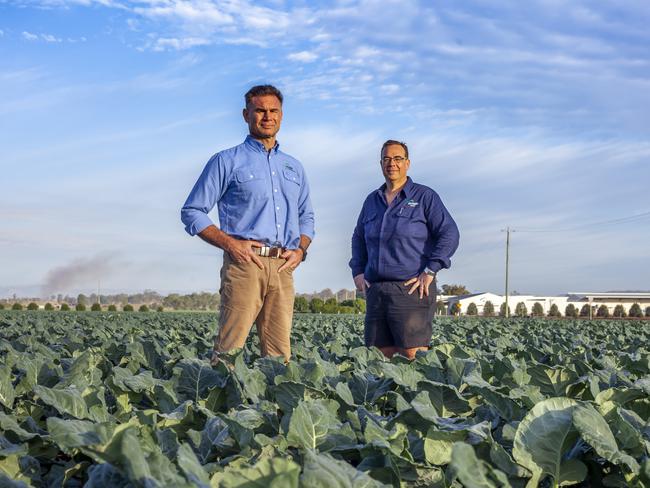
“We had it converted into an office (and business headquarters) about a decade ago.”
That renovation served as a sort of coming of age for Rugby Farm, having well and truly outgrown the family home and its traditional “Mum and Dad” business model to evolve into a more professional, corporate outfit. And all the while “maintaining family values”.
It’s a move that has seen the business not just prosper, but flourish — as a quick survey of the surrounds at Gatton can attest. It’s 7am and while not early, particularly by Queensland standards, activity abounds. There’s staff and contractors coming and going, deliveries being made, trucks packed with produce heading to market and distribution centres, others coming in to reload. All in the shadow of processing facilities where man, woman and state-of-the-art machine are busy washing, cutting and packaging sweet corn, green beans, pumpkin, broccoli, cauliflower, lettuce and cabbage to fill a growing consumer appetite.
Precisely how much food that equates to, Hood says it is hard to quantify. “We are not ones for numbers,” he says. “I’m not trying to avoid the question it is just some things are sold by inches, some other things are sold by kilos. There is no simple number. But all up, the operation is doing about 15,000 acres (6070 hectares) of vegies a year.
“If you put that into perspective the average vegie farm is 100-odd acres (40.5ha), we are planting three of them every week. It is a mammoth task, the logistics and the intensity of horticulture — no one knows unless you’re in the game — every single day.”
RUGBY FARM FAST FACTS
20 MILLION
PACKS OF VALUE-ADDED VEGETABLES PRODUCED A YEAR
107
YEARS IN BUSINESS
4
GROWING REGIONS
900
WORKERS
6070
HECTARES PLANTED EACH YEAR
25
RUGBY FARM TRUCKS DELIVERING PRODUCE
3
AVERAGE-SIZED VEGETABLE FARMS PLANTED EACH WEEK
IT HAS been 107 years since the brothers’ grandfather, Ernest Hood, then aged just 19, purchased the original Rugby Farm, naming it for the English township of Rugby, from which his parents migrated to Australia in the late 1800s.
The family has grown “pretty much most things” over the years, starting out with citrus orchards and dabbling with onions, lucerne and cotton — “we almost ended up at Emerald at one point” — before settling on vegetables half a century ago.
Always ahead of the pack when it came to innovation, the Hoods pioneered irrigated farming in the Lockyer Valley and in more recent decades embraced technology to enable more consistency in crop quality and yields.
But it was a push by supermarkets in the late 1990s to deal more direct with their grower suppliers that Matt cites as perhaps having the biggest positive impact on the business. While eager to seize the opportunity, the Hoods soon realised that supplying supermarkets direct came with a catch: it required year-round supply. After tinkering, with limited success, on extending the growing season within existing operations, they made the decision to expand their geographical footprint.
Rugby Farm now operates in four geographical regions — Gatton, Lowood and Fernvale in the Lockyer Valley, Clifton on the nearby Darling Downs, Amiens, Kyoomba and Liston in the cool-climate growing region of southern Queensland and northern NSW, and Bowen and Ayr in North Queensland — allowing for the planting and harvesting of crops “every single day”.
Produce is split into winter and summer vegetable lines, with broccoli, cauliflower, iceberg lettuce and cabbage winter staples and the summer crops of sweet corn, green beans and pumpkins. Both winter and summer crops are grown in the Lockyer Valley and Darling Downs, with summer vegetables produced year-round in North Queensland. The southern Queensland farms work in conjunction with a small group of specialist growers in Victoria to help meet demand from southern markets for winter vegetables year round.
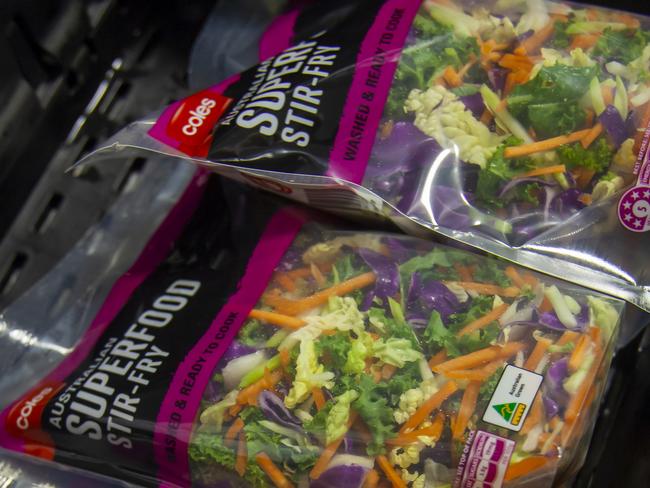
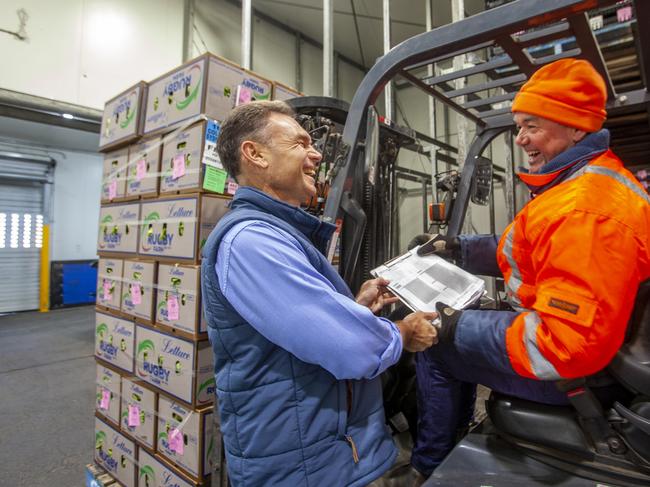
FOCUSED on producing “highly nutritious food”, Rugby Farm adheres to a mix of organic and conventional farming practices, having “leant this way and that way” in the past. “We’re now basically somewhere in the middle with a strong focus on soil health,” Matt says.
“The problem with organics is that (the certifiers) are too busy telling you what you can’t do rather than what you can, and organic farmers are very restricted on what nutrition can be added once the crop is in growth.
“If you start to see a deficiency in your crop, as an organic grower you can’t really do too much about it, you’ve got to rely only on your soil health, whereas we can add a bit of zinc or boron or iron and two days later, ‘bang’, we’ve got this very well balanced, nutritious crop.
“So our philosophy is to take the positive attributes of soil health out of the organic program but still ensure we have the tools in our armoury from conventional farming to produce the perfect produce.”
Rugby Farm is constantly upgrading its farming equipment and practices, including cover crops and compost applications, to assist in soil nutrition and health.
Strict biosecurity measures are enforced, ensuring farms remain clean of weed seed to prevent the spread of pests and diseases between properties. The latest technologies in weed and pest management are also implemented, including drones and automated weed removers.
Chemical use is significantly reduced through the use of beneficial bugs and biological products, while compost minimises the amount of synthetic fertilisers applied to the soil. Water use is managed by trickle-tape irrigation, which delivers the water directly to the crop’s roots, minimising wastage, while soil erosion is controlled by maintaining vegetation along waterways.
Our philosophy is to take the positive attributes of organics but still have the tools from conventional farming
AT RUGBY Farm, sweet corn, green beans, broccoli and lettuce are the “big four” from a production perspective, with cauliflower and, more recently, wombok — thanks largely to increased cooking influences from South-East Asia — not far behind.
Matt, who is in charge of the business operations while Dan looks after production, travels overseas most years to learn more about consumer trends and world’s best-practice “and bring those ideas home”.
It was on one such trip that he was exposed to pre-packed cut vegetables and other value-added products, which he says has transformed the vegetable landscape, from both farming and consumer perspectives. “It became pretty evident to me that cut vegetables were going to be the biggest growth area in the fresh produce sector,” he says.
Matt, the 2013 AUSVEG Grower of the Year, says he saw twin benefits in a move towards more cut vegetables — or as he terms it “basically doing for people what they should be doing at home”. It could not only lift vegetable consumption by making them more consumer friendly, but would go a long way in addressing wastage of product that did not meet strict consumer specifications.
According to the National Food Waste Baseline, agriculture accounts for almost a third of food waste in Australia, estimated at more than $20 billion. About 2.2 million tonnes of food is wasted within primary production and a further 1.8 million tonnes is lost in manufacturing.
“The retail sector is a highly competitive environment and they all want to have some competitive advantage, which is good quality on the shelf,” Matt says.
“As a grower we can’t do that every day … with every crop we go into we can never pick 100 per cent that meet our customer specifications. Only 97 or 50, 40 or 30 per cent might be good enough … so the question becomes what do you do with the rest?”
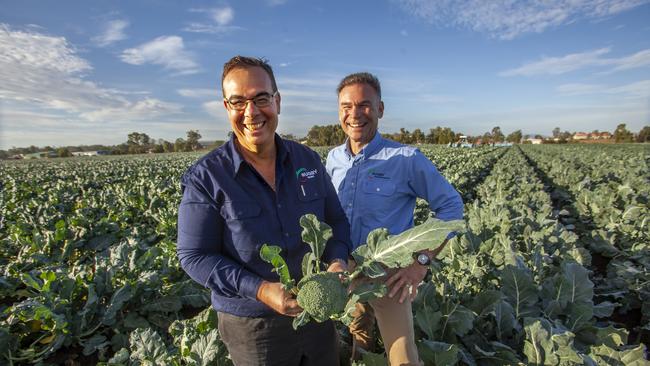
FIVE years ago, Rugby Farm teamed up with Coles — Australia’s second-biggest supermarket chain — to launch pre-cut vegetables in a ready-to-cook format that could be microwaved or opened ready to be steamed or boiled. Coles research showed a third of customers didn’t know at 5pm what they would be having for dinner that night and about half said they didn’t have time to cook from scratch.
“We are not planning as far ahead, new household densities are inviting us to shop more often and we have a very, very strong adversity to home waste where we welcome buying a smaller portion,” says fresh food analyst Martin Kneebone of market researcher Fresh Logic.
“To me, the dominant overarching trend across fresh food is that if you make it more meal-ready and get it closer to the plate it is generally welcomed by consumers.
“And I can’t see the trend easing.”
In more recent years Rugby Farm and Coles have developed a further range of products, including sweet potato noodles and zucchini noodles, as well as the recently launched cauliflower and kale rice and root vegetable chips.
Rugby Farm now produces about 20 million bags of cut or value-added vegetables a year and its own fleet of 25 trucks laden with the produce depart Gatton every day for Townsville, Brisbane, Sydney, Melbourne and Adelaide.
We are still sticking our fingers in the dirt and pulling out the weeds by hand
MATT says with margins “very, very tight” in the horticulture game, growers have “basically got to be the best of the best in order to be making the profits you need to be able to continue to invest and take your business to where you want it to go”. “You can hover and tread water but that doesn’t help business growth or to continue to bring world’s best practice into your operation,” he says.
But one advantage of tough business conditions, Hood concedes, is that “it helps you refocus”. “If a business is tough you start to look very hard at things and that can be a good thing,” he says.
This has led to more of a focus on investment in labour-saving technology, particularly within Rugby Farm’s packing facilities. Matt describes labour as an ongoing issue for the business, particularly when “we are operating with the highest labour rates in the world”.
“How we will be competitive globally is a big challenge for us,” he says. “Technology is advancing at a great rate of knots but things that are practically applicable in the field are still not quite there yet.
“At the end of the day we are still sticking our fingers in the dirt and pulling out the weeds by hand. We are still cutting lettuce and broccoli by knife — every head.” Matt says with staff hard to find in the horticulture industry, talent needs to be fostered. Roughly half the Rugby Farm workforce consists of working holiday visa holders. “Without (such programs as the Pacific Islander Workers Program) there would not be any produce on the shelves — I’m not joking either,” he says. “That repetitious, physically demanding work 15-20 years ago, it was all Aussies out there. But today that younger generation just doesn’t want to do that type of work.”
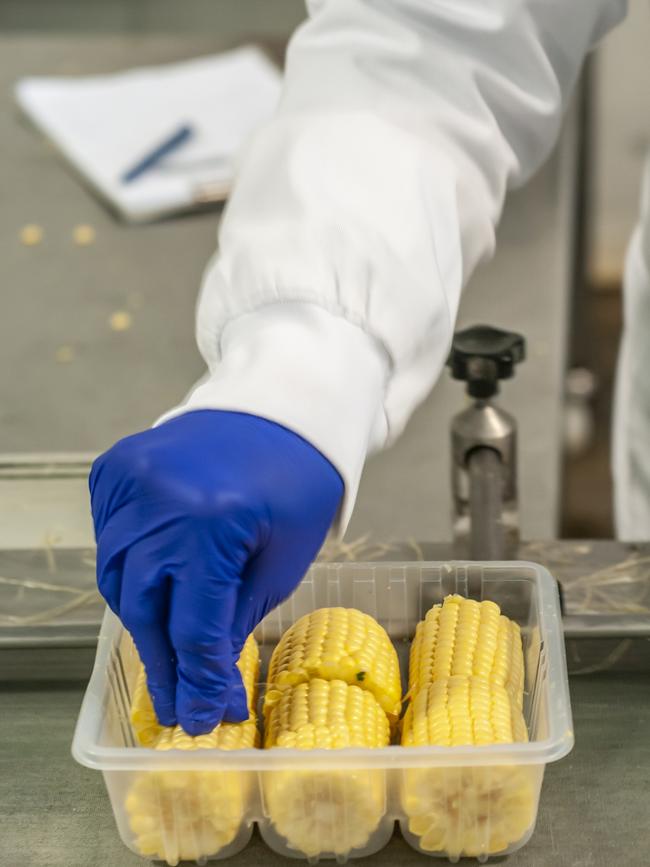
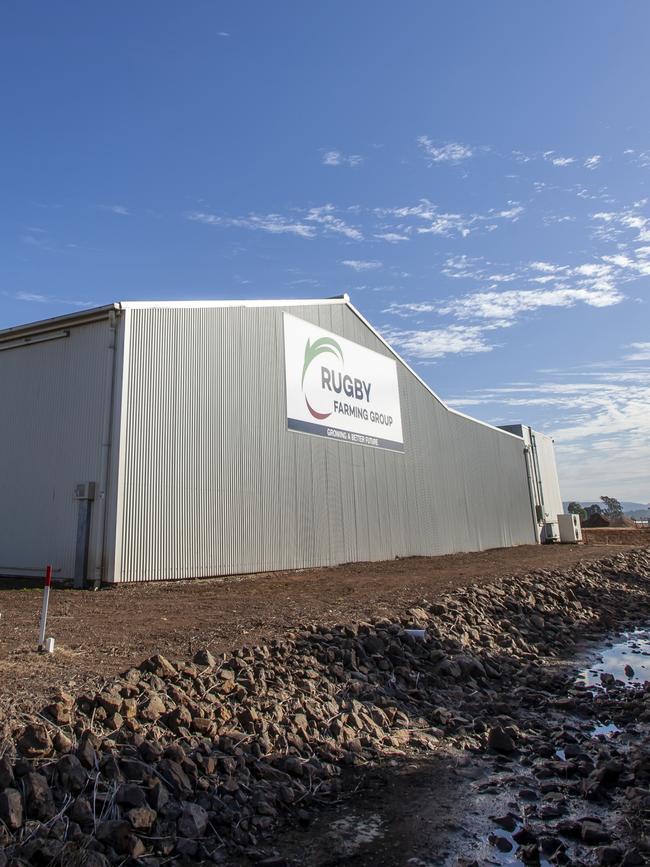
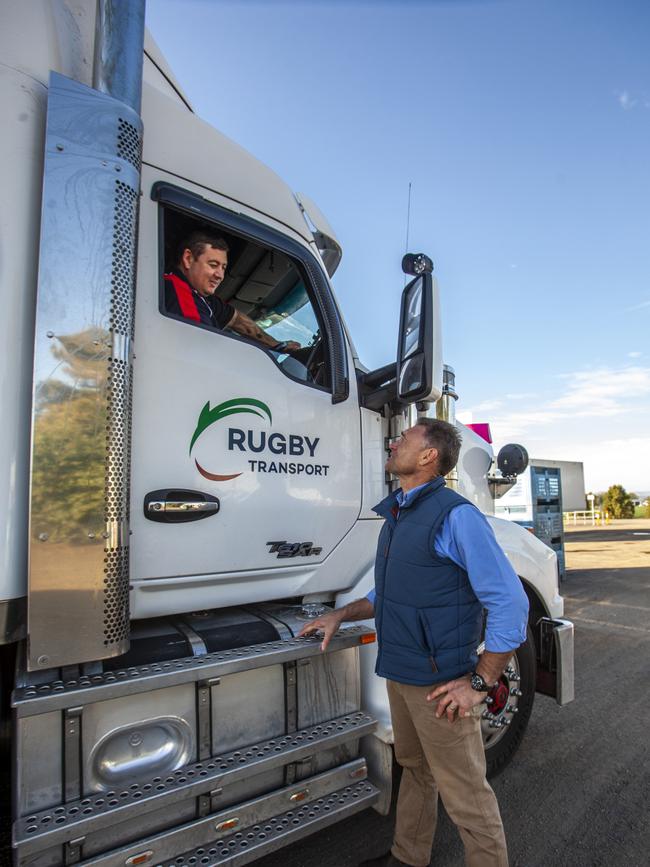
JAMES Whiteside, chief executive of AUSVEG — Australia’s peak horticultural body — concedes labour sourcing and costs, alongside escalating energy bills and access to water have become major bugbears for the industry.
“It’s a real problem,” he says. “And it invariably means there is a move towards scale … towards trying to drive down variable costs through things like mechanisation, which requires capital.
“So there’s been a move to a higher-capital-costs, lower-variable-cost model as opposed to perhaps lower capital costs and lower variable costs, which certainly plays to the Rugby Farms of this world.
“It is happening across all of agriculture. You do need scale or you do need to be able to differentiate so that you can try and get your prices above the pack.”
Whiteside adds that scrutiny along the supply chain means farmers have to be “much more compliant” with rules and community expectations than they once were.
“You’ve got to make sure the food is safe, you’ve got to make sure the labour that you secure is in accordance with the law,” he says. “The supermarkets are increasingly demanding that growers comply with those social licence obligations.
“That actually presents quite an opportunity for growers because it does mean that some of the people that are not prepared to comply with the rules, and who have undercut growers that do, are going to find access to markets become harder.”
Back in that humble weatherboard home-cum-office on Rugby Farm, Matt Hood says there’s no sign of growth slowing anytime soon.
“Our philosophy is that if there is an opportunity that meets our business goals and needs and direction, and it fits what we do, we go for it,” he says.
Proving that home is where the head is — as well as the heart.
VEGIES TAKE THE BISCUIT
THE outlook for Australia’s billion-dollar vegetable industry has “probably never been brighter”, AUSVEG chief executive James Whiteside says.
“The interest in fresh produce and healthy eating and the environmental message of vegetables, in terms of their consumption of natural resources and CO2, (is unprecedented),” Whiteside says.
“Big producers are coming up with better and novel ways of presenting their product and obviously we are seeing an impact with the growth of food services — we are all eating out more.
“There is a growing conversation in the community about the value of vegetables taking a bigger segment of the plate. Increasingly people, if they are eating meat-based protein, are having higher quality and smaller portions, and supplementing that with healthy and environmentally friendly produce.”
The trend is also showing up in Australian Bureau of Agricultural and Resource Economics and Sciences figures that point to the farmgate value of the nation’s vegetable industry increasing 14 per cent to $4.45 billion in the next five years.
It follows a $50 million drop in value to $3.85 billion in 2017-18 and expected growth of less than 2 per cent last financial year to $3.92 billion.
Whiteside says it is “irrefutable” to suggest that “over the next 20-30 years there is going to be a huge move away from meat to vegetables, pulses and nuts for a whole raft of health and environmental reasons”.
Challenges, however, include “relatively low barriers to entry” in the vegetable industry, “which means any time there is a spike in prices, producers go and grow more and prices come back down again”, rising energy costs and the ability to source adequate and cost-effective labour.
FARMERS TURN FOOD WASTE INTO OPPORTUNITY

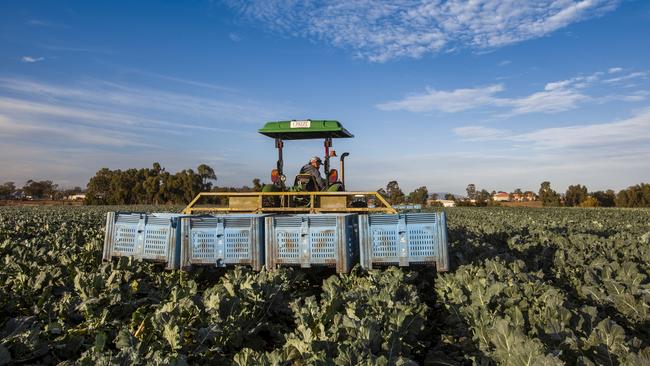
Add your comment to this story
To join the conversation, please log in. Don't have an account? Register
Join the conversation, you are commenting as Logout
Biggest investors, landholders: Who Owns Australia’s Farms 2025
Meet the families, billionaires and investors expanding their hold on Australian farms. Discover the biggest players of 2025 and where they hail from.
Farm succession: ‘The best time to start the conversation was yesterday’
Succession in family farming businesses doesn’t always have to be stressful, and these three successful farming families are case in point.